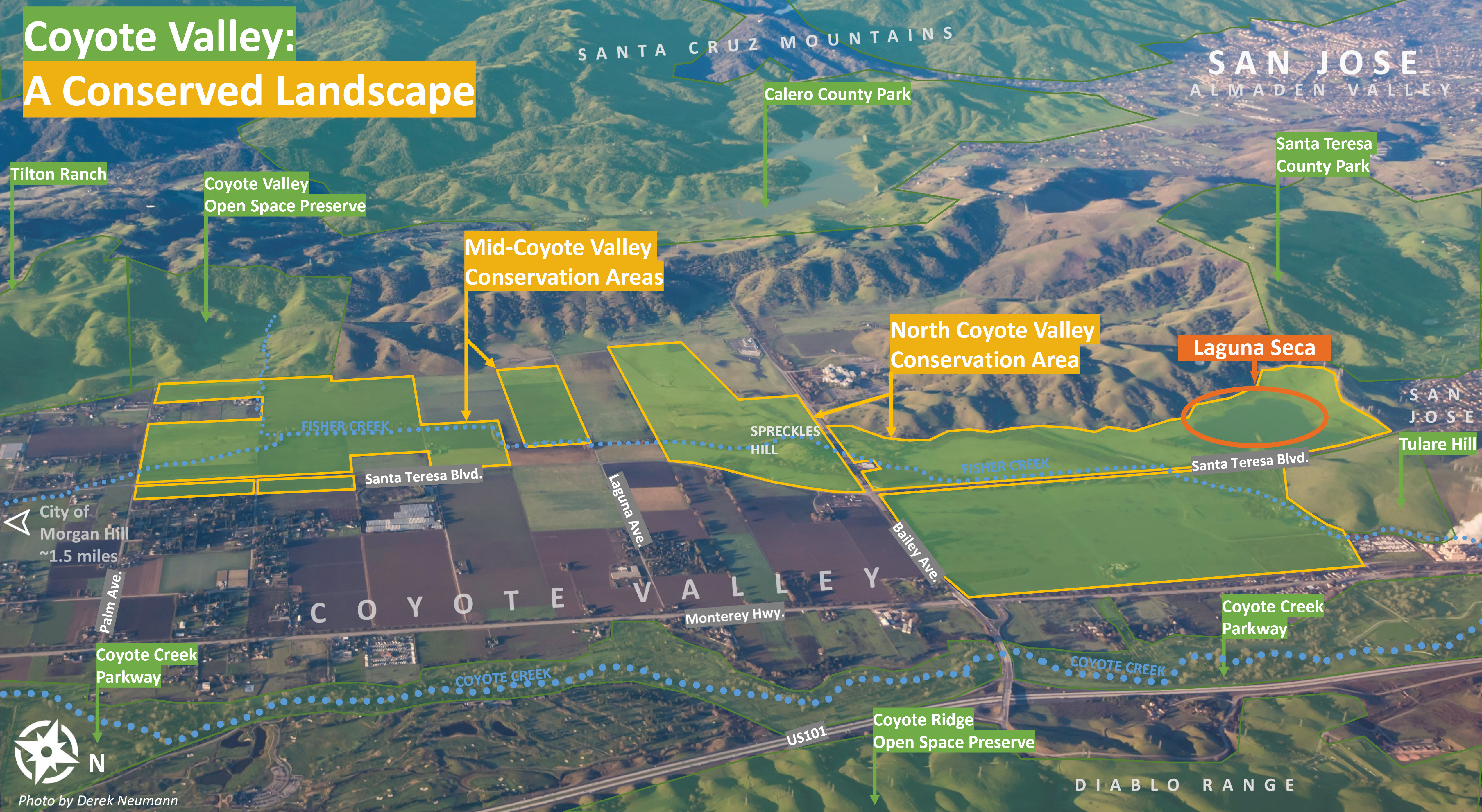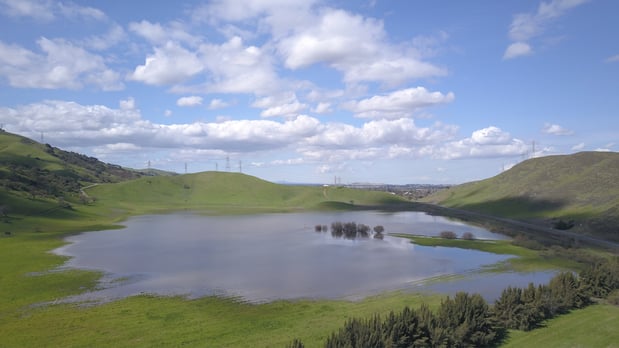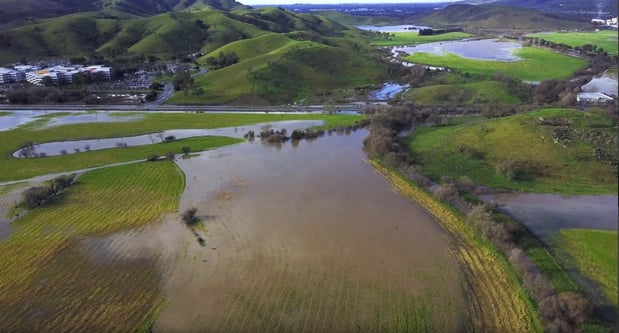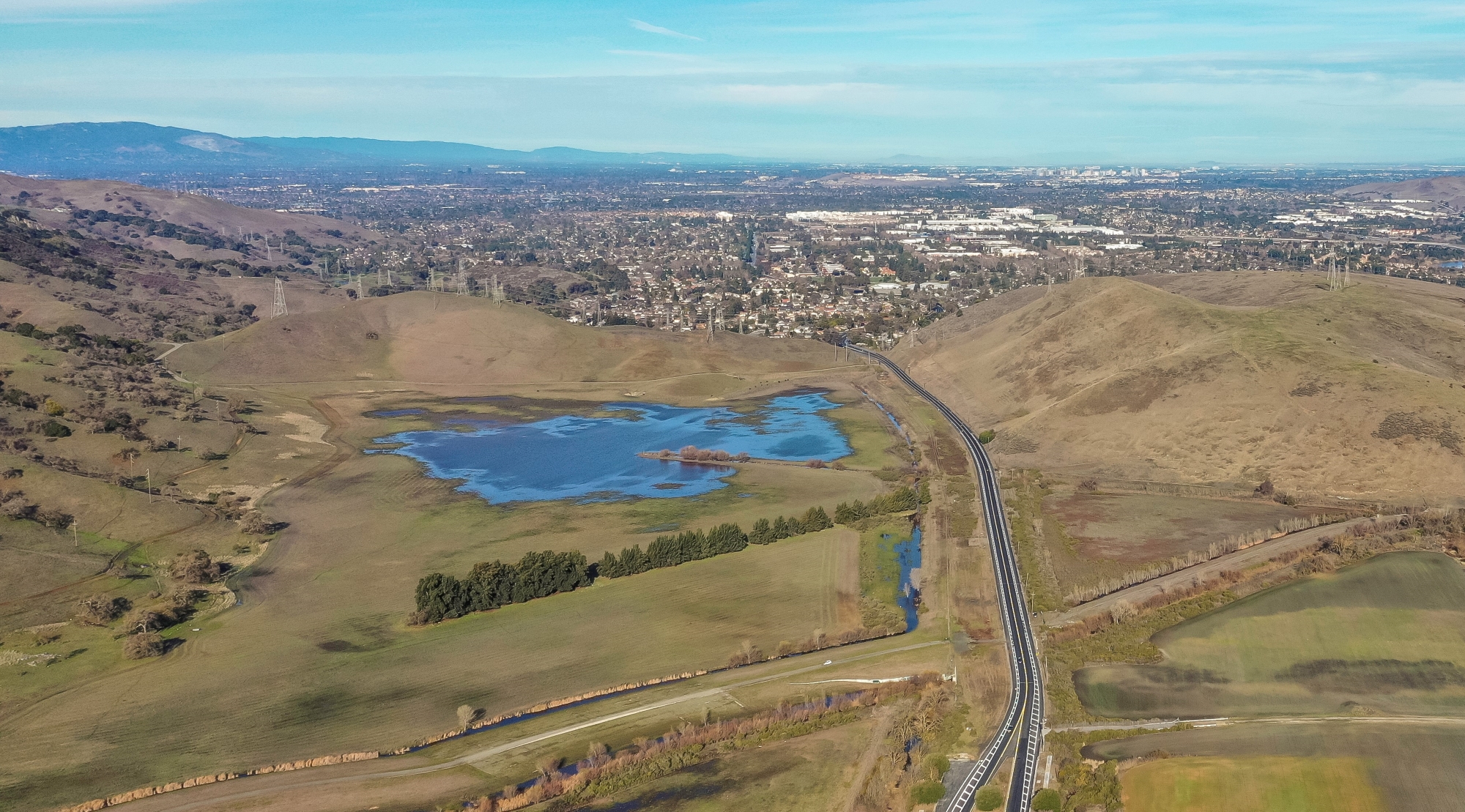Protection of North Coyote Valley Floodplain to Reduce Downstream Flood Risks in Urban San José
San José, CA - In September 2021, the Santa Clara Valley Open Space Authority (the Authority) received multiple funding awards totaling over $16 million from the State of California for the protection of North Coyote Valley open space lands. $6 million in funding comes from an Urban Flood Protection grant from the California Natural Resources Agency, and $10 million has been allocated by the California Legislature in SB-170, the Budget Act of 2021.
The combined $16 million from the State will go towards the purchase of the 376-acre Laguna Seca property in North Coyote Valley from the Peninsula Open Space Trust (POST), which purchased the land in 2019. The lands comprise one of the Bay Area's last remaining undeveloped valley floors, including 300 acres of wetland, critical floodplain, and aquifer recharge areas.

Map showing Laguna Seca in North Coyote Valley
“For over 40 years, the Coyote Valley has been called a last chance landscape, due to the ongoing threat of development that has hung over it. By permanently preserving these North Coyote Valley lands as open space, we are shifting away from sprawl development and towards investing in nature as infrastructure to help us combat climate change,” said Andrea Mackenzie, General Manager of the Open Space Authority.

Laguna Seca wetland in North Coyote Valley during the wet season
The Authority plans to implement a landscape level wetland and riparian habitat restoration project in Coyote Valley to reduce the likelihood of severe downstream flooding in San José. This can help protect the City's most disadvantaged communities from repeated displacement and property damage due to flooding.
North Coyote Valley’s landscape and ecosystem functions have been altered and degraded by over 100 years of reclamation, flood control, and limited development, but riparian habitat, ponds, and wetlands remain, indicating to scientists that the underlying groundwater and soil conditions can be restored and enhanced.

Laguna Seca wetland in North Coyote Valley during the wet season
“As climate change drives more intense rainfall during the winter months, open spaces and floodplains provide important places to help absorb excess rainwater,” said California Secretary for Natural Resources Wade Crowfoot. “Protecting and restoring places like Laguna Seca in Coyote Valley will bring myriad of benefits, including reducing flood risk for surrounding communities, natural infrastructure for groundwater recharge, and habitat to support biodiversity.”
To help achieve this restoration vision, the Authority also received a $350,000 grant from the state’s Wildlife Conservation Board in August 2021 to study, invite input, and determine restoration design concepts for the Coyote Valley through an extensive master planning process. While the Coyote Valley Conservation Areas Master Plan has many goals, the primary goal is enhancing and restoring wildlife habitat, creating ecological connectivity, and protecting critical water resources to support water supply and enhance floodplains to increase climate resilience for surrounding communities.
Detailed groundwater, surface water, and soil sampling, as well as hydraulic modeling and wetland mapping will be part of the Master Planning process to enhance water retention and determine conservation goals.

North Coyote Valley during the wet season (Laguna Seca wetland in top center)
“Working with our state and local partners and the community, the upcoming Master Plan for the protected lands in Coyote Valley brings us one step closer to realizing the community-serving conservation vision of a Coyote Valley for all,” said Mackenzie.
The Coyote Valley Conservation Areas Master Plan will guide the future use and management of approximately 1,000 acres of open space within Coyote Valley and will serve as a blueprint to implement the Authority’s Coyote Valley Landscape Linkage Report and achieve the floodplain preservation goals of the 2018 City of San José ballot Measure T. Measure T, passed by voters, provided infrastructure funding city-wide, and authorized the City of San José to participate in the purchase of the 953-acre North Coyote Valley Conservation Area to protect water quality and reduce flood risk.
“These lands are a gift to future generations,” said Sam Liccardo, Mayor of the City of San José. “We are investing in our natural infrastructure by protecting and restoring vital habitats and preserving public recreation spaces for our grandchildren to enjoy. I am incredibly grateful for our local partners at POST and the Authority for leading this charge, and for our state leaders who continue to support community resilience in the face of climate change and protection of our public spaces and vital floodplains.”
“This is a once-in-a generation opportunity to protect the largest remaining freshwater wetland in the South Bay Area,” said Assemblymember Ash Kalra. Kalra authored Assembly Bill-948 in 2019, identifying Coyote Valley as a landscape of statewide significance, and lead efforts to secure additional state funding as part of the 2021-22 State Budget. “Not only will the public benefit from access to irreplaceable natural landscapes, but the funding will also support critically important regional ground water recharge for future flood protection and climate-resilience.”
The community-based Coyote Valley Conservation Areas Master Plan process will focus on interconnection, inclusion, and resilience, while designing with nature. During this process, communities from across Santa Clara Valley can learn about opportunities for future public access and education, wildlife connectivity, habitat protection and restoration for listed species, floodplain restoration, and how nature can help increase community resilience in the face of climate change.
The Authority is kicking off the Coyote Valley Conservation Areas Master Plan process with an educational webinar series, Discovering Coyote Valley, which takes place at 11:00 a.m. on the Thursdays of September 16th, 23rd, and 30th.

